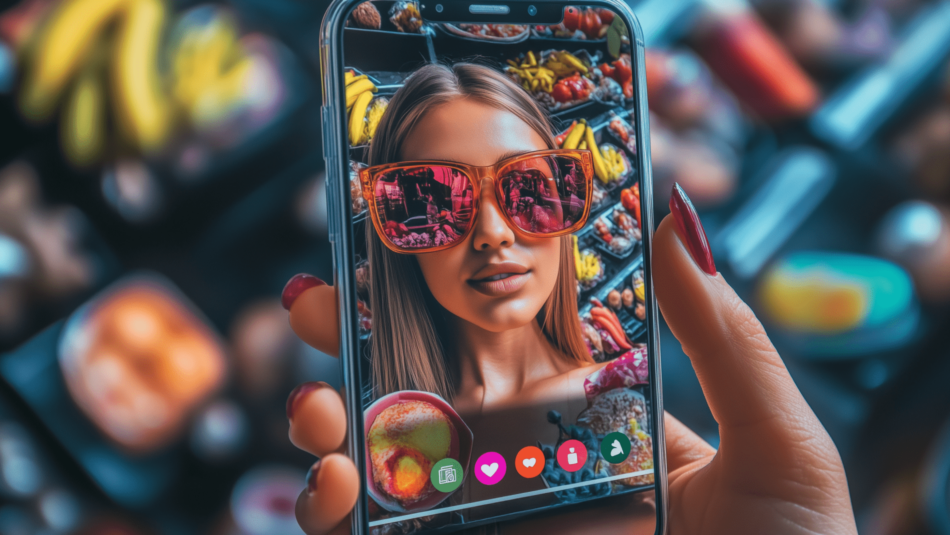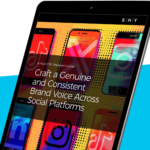
The Rise of Virtual Influencers: Opportunities and Risks for CPG Food Brand Marketers
Influencers play a well-established role in B2C digital marketing. But a new, AI-driven tactic is emerging with the potential to shake up influencer marketing and open new doors for CPG food marketers in the process.
“Virtual influencers” are precisely what they sound like — digital avatars created using AI and CGI with the sole purpose of engaging and influencing audiences on social media and other channels.
This burgeoning technique raises intriguing questions: How might virtual personalities fit into your marketing strategy? What opportunities and challenges do they present for food brands like yours? When and how should you consider testing this technology, and how can you do so responsibly?
Here’s what you need to know about virtual influences, their potential impact on the CPG food industry, and how to navigate this nascent trend.
The Current State of Virtual Influencers
Virtual influencers are on the bleeding edge of digital marketing today. There aren’t yet established benchmarks or industry best practices to guide you. At the same time, this isn’t something you can afford to ignore.
While virtual influencers haven’t achieved critical mass, a number of virtual avatars are already in use and actively engaging audiences across social media platforms. On TikTok, for example, several virtual influencers have amassed substantial followings — often without users even realizing they’re interacting with artificial entities.
On top of that, some high-profile brands are already testing virtual influencers with their audiences. The beauty and fashion industries have been especially quick to embrace this new technology. Luxury brands such as Prada, Chanel, Dior, and Calvin Klein are leading the charge, exploring innovative ways to showcase their products through virtual models and AI-powered brand ambassadors. This early adoption is paving the way for other sectors to follow suit. A few brands outside the fashion realm are also dipping their toes into the AI influencer pool. Companies like Red Bull and Samsung have experimented with digital personas.
However, it’s not all smooth sailing. A recent Coca-Cola holiday ad using generative AI landed with a thud as consumers panned the “soulless” and artificial-looking CGI. And Calvin Klein’s experiment with virtual avatar Lil Miquela drew enough criticism that the brand issued an apology (though it’s worth noting that the criticism wasn’t primarily centered on the company’s use of a virtual influencer). These examples highlight the importance of thoughtful strategy and execution for brands that decide to test these waters.
Key Benefits and Use Cases of AI Influencers
Virtual influencers offer several compelling and unique advantages that have the potential to add new life to your marketing strategies. Consider the following benefits:
- Control. With virtual influencers, brands enjoy unprecedented control over messaging and aesthetics.
- Creative freedom. This approach paves the way for significant creative opportunities, including the ability to explore innovative formats, virtual worlds, and futuristic campaigns that may not be feasible with traditional influencer talent
- Scalability. Unlike human talent, you can theoretically use virtual influencers to develop as much content as you need to fuel your campaigns. In addition, you can easily modify the appearance, tone, and ethnicity of virtual avatars to suit different target audiences.
- Personalization. Imagine creating personalized versions of your campaign, perhaps even empowering your avatar to address individual consumers by name — a level of customization that is otherwise impractical at scale.
- Cost. Virtual influencers can be more cost-effective than working with human talent. They eliminate issues like missed deadlines or difficult talent relationships, streamlining your campaign development process.
That said, AI is a tool, not a replacement for human influencers. The key is to find the right balance for your influencer marketing program and know when to deploy AI assets for maximum impact.
Limitations and Challenges of Virtual Influencers
While virtual influencers offer innovative opportunities, they come with significant challenges CPG food brands will need to carefully navigate.
The biggest unknown has to do with consumer acceptance, which is still uncertain at best. On top of that, the quality of AI-generated content varies widely. Some attempts appear glaringly artificial, potentially damaging your brand’s credibility.
Early forays by beauty brands have received mixed reactions, highlighting the risks involved with this new technology. There’s a real risk of losing audience trust if you don’t tread carefully. Meanwhile, the lack of established best practices means early adopters will need to chart unknown waters.
Finally, it’s crucial to recognize where AI influencers fall short. These artificial entities are not appropriate for:
- Building trust and authenticity
- Upper-funnel brand awareness
- Creating emotional connections
- Replacing established human influencers
These limitations underscore the importance of strategic deployment. AI influencers aren’t a one-size-fits-all solution, but rather a tool to complement your existing marketing arsenal. As you explore this technology, remember that maintaining genuine connections with your audience should remain a top priority.
Ethical and Legal Considerations
Brands that venture into the world of virtual influencers are entering a minefield of ethical and legal considerations. Transparency isn’t just a buzzword — it’s a necessity. You must disclose when AI is used in your campaigns, as platforms like Facebook and Instagram now mandate for AI-generated content.
But disclosure is just the tip of the iceberg. You’re walking a tightrope between innovation and authenticity. Your audience’s trust is your most valuable asset, and maintaining it requires careful navigation of this new landscape. Consider the potential backlash if your audience feels deceived by an AI persona they believed was human.
There’s also the thorny issue of unrealistic beauty standards. Just as Photoshop raised concerns about body image, AI influencers could exacerbate these problems. You’ll need to weigh the creative possibilities against the potential social impact of your campaigns.
Remember, the legal landscape is still evolving. Stay informed about emerging regulations to ensure your AI influencer strategies don’t put you at risk.
Brands that balance innovation with ethical responsibility will come out on top, both in terms of protecting their audience’s trust and staying on the right side of legal trouble.
A Cautious Approach: Near-Term Recommendations for CPG Food Brands
Virtual influencers are as-yet unproven in the world of CPG food brands. Those who embrace early adoption should do so with a measured approach.
Run limited tests with various audiences before committing to full-scale implementation. This approach allows you to gauge effectiveness and iron out any kinks before committing significant resources (or putting your brand at risk if your audience rejects this new approach).
As you experiment, keep one eye on the present and the other on the future. The AI influencer space is evolving at breakneck speed, and staying ahead of the curve will be crucial for success.
Appropriate Use Cases
Human influencers still hold a distinctive edge over their virtual counterparts when it comes to building trust, creating emotional connections, and fostering upper-funnel brand awareness — all critical, evergreen marketing objectives.
However, virtual influencers have the potential to excel in other situations, including:
- Lower-funnel, transactional advertising
- Product demonstrations
- Situations similar to using anonymous actors in ads
- Quick, personalized ad content
These use cases leverage the strengths of AI influencers while minimizing potential drawbacks. Focusing on these areas allows you to maximize the ROI from your influencer-driven content and explore new creative territories.
The Future of AI Influencers
The landscape of virtual influencers is sure to evolve rapidly in 2025 and beyond. The swift pace of technological advancement — think of how far ChatGPT has come in just two years — suggests we could be on the cusp of another seismic shift.
Virtual reality and the metaverse are likely to become the new frontier for virtual influencers. Imagine your brand represented by a hyper-realistic avatar, interacting with consumers in immersive digital environments. As virtual worlds become more commonplace, acceptance of AI personas may well increase.
To stay ahead of the curve:
- Keep a finger on the pulse of AI advancements
- Experiment with integrating AI influencers into your virtual reality campaigns
- Continuously gauge consumer sentiment towards AI personas
- Refine your approach based on emerging best practices
By staying informed, testing carefully, and maintaining transparency, you can leverage AI influencers to maximize ROI and create engaging content while preserving authenticity and trust. Wherever you land, know that the most successful marketers in 2025 will be those who combine the scalability and efficiency of AI with the emotional resonance and genuine connections that only human influencers provide.





